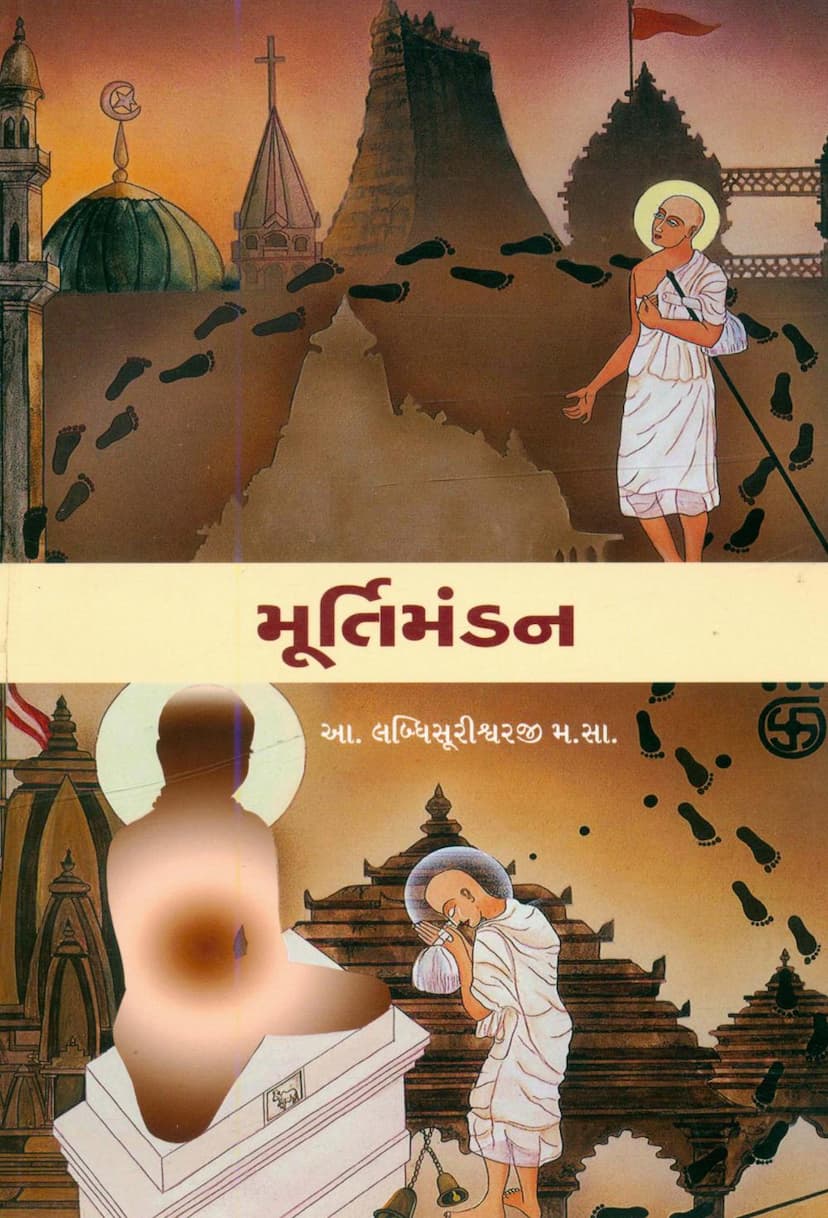Murti Mandan
Added to library: September 2, 2025

Summary
This document is a Jain text titled "Murti Mandan" (Idol Worship) authored by Acharya Shrimad Vijay Labdhisurishwarji Maharaj and translated into Gujarati by Ganivar Vikramsen Vijayji. Published by Shri Labdhisuri Jain Granthmala, this book aims to refute the arguments against idol worship in Jainism.
Here's a comprehensive summary based on the provided text:
Core Argument: The book strongly advocates for the validity and importance of idol worship (murti puja) in Jainism, countering arguments from sects that oppose it, particularly the "Dhunda" sect (implied to be referring to the Sthanakvasi tradition).
Key Themes and Arguments:
- Historical Evidence of Idol Worship: The text asserts that the presence of idols from the time of Lord Mahavir proves the ancient and essential nature of idol worship among Jain followers. It dismisses opposition to idol worship as foolishness.
- Refutation of Anti-Idol Arguments: The book systematically addresses and refutes the arguments of those who oppose idol worship. This is done through logical reasoning, scriptural interpretation, and illustrative examples.
- The Need for an Icon (Murti) for Meditation: The author argues that meditating on an formless, nirakar (formless) God is impossible for humans. Just as one needs a picture to meditate on someone unseen, an idol serves as a visual aid to focus the mind on the divine principles and attributes of the Tirthankaras.
- Critique of Opponents' Practices: The text highlights perceived inconsistencies in the practices of anti-idol worshipers. For instance, it points out that they themselves respect and venerate images or pictures of their gurus, questioning their objection to idol worship. The practice of photography and the process involved are also questioned, implying a contradiction with their stance against idol worship.
- Scriptural Basis for Idol Worship: A significant portion of the book is dedicated to presenting scriptural evidence supporting idol worship. Numerous references are cited from Jain Agamas (Sutras), including:
- Aavashyak Sutra: Mentions Bharat Chakravarti establishing temples with 24 Tirthankara idols.
- Bhagvati Sutra: States that the Niyukti (commentaries) should be considered authoritative, and highlights the importance of respecting Niyukti. It also mentions the worship of Jin-pratimas in Tungiya city.
- Sutasagadaanga Sutra: Mentions that Lord Ardrakumar attained enlightenment through seeing Jin-pratimas.
- Upaasakadashaa Sutra: Mentions Anand Shravak's acceptance of venerating Jin-pratimas.
- Sutras mentioning celestial beings and gods venerating Tirthankara idols and temples.
- References from ancient texts like the Mahabharata and Valmiki Ramayana are used to demonstrate the ancient practice of worshipping idols (e.g., Dronacharya's clay idol, Shiva Lingam).
- Vedic scriptures (Yajurveda, Manusmriti) are also cited to show the prevalence of idol worship in broader Indian traditions, suggesting that Jainism, as a part of this heritage, also embraced it.
- The Purpose of Offerings: The book explains that offerings like flowers, fruits, sandalwood, incense, lamps, rice, and sweets are not offered to the idols as if they were living beings but as symbolic representations of devotion and an expression of specific sentiments. For example, flowers symbolize overcoming desire, fruits represent seeking liberation, sandalwood signifies purity, and the lamp symbolizes the dispelling of ignorance. These offerings are a means to internalize the Tirthankaras' virtues.
- The Concept of 'Chaitra' and its Meaning: The text delves into the interpretation of the word 'Chaitra,' arguing that it primarily refers to Jin temples and idols, and not to sadhus as claimed by some opponents.
- The Nature of 'Sthapana': The book discusses the concept of 'Sthapana' (establishment or symbolic representation), arguing that just as letters on paper are considered 'Sthapana' for knowledge, idols are 'Sthapana' for the divine.
- The Role of Faith and Bhavana (Devotion): The author emphasizes that the true benefit of idol worship comes from the devotee's internal devotion (bhavana) and faith, not from the idol itself being an independent entity capable of action.
- Critique of "Loakashah Mat Samarthan": The book explicitly mentions and refutes a publication titled "Loakashah Mat Samarthan" by Ratanlal Doshi, accusing it of misinterpreting scriptures and propagating false doctrines. The authors defend the integrity of their gurus and the ancient Jain traditions.
Overall Tone: The book is polemical, strongly arguing against the opposing viewpoint and presenting the case for idol worship with conviction, scriptural backing, and logical arguments. It aims to clarify misunderstandings and strengthen the faith of Jain followers in the practice of idol worship.
The extensive appendices (Page #95 onwards) provide numerous scriptural quotes and references, further reinforcing the arguments for idol worship by citing instances from various Jain texts and even relevant passages from broader Indian traditions.